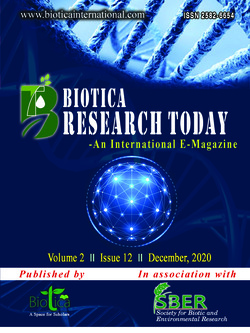
Significance of White Worm in Aquaculture as A Source of Protein-Rich Live Feed
Tamilarasu, A.*
Dr. M.G.R Fisheries College and Research Institute, Ponneri, Tamil Nadu Dr. J Jayalalithaa Fisheries University, Tamil Nadu (601 204), India
Nethaji, M.
Institute of Fisheries Biotechnology, Vaniyanchavadi, Tamil Nadu Dr. J Jayalalithaa Fisheries University, Tamil Nadu (603 103), India
Bharathi, S.
Dr. M.G.R Fisheries College and Research Institute, Ponneri, Tamil Nadu Dr. J Jayalalithaa Fisheries University, Tamil Nadu (601 204), India
Lloyd Chrispin, C.
Dr. M.G.R Fisheries College and Research Institute, Ponneri, Tamil Nadu Dr. J Jayalalithaa Fisheries University, Tamil Nadu (601 204), India
Somu Sunder Lingam, R.
Krishnagiri-Barur Centre for Sustainable Aquaculture, Barur, Krishnagiri, Tamil Nadu Dr. J Jayalalithaa Fisheries University, Tamil Nadu (635 201), India
DOI: NIL
Keywords: Aquaculture, Live feed, Protein rich, White worm
Abstract
White worm, a marine oligochaete, potential live feed for many aquatic animals, due to their protein richness. White worm culture is quite easy and economical when comparing with other live feed culture methods like Artemia, Rotifer, etc. The white worm is one of the richest sources of protein among the other cultivable live feeds; however, there is no optimal rearing protocol for large-scale production to meet out the live feed requirement of the fast-growing aquaculture sector. The article discusses the culture methods, nutritional quality, and future of white worms in the aquaculture industry, in brief.
Downloads
not found
Reference
Fairchild, E.A., Bergman, A.M., Trushenski, J.T., 2017. Production and nutritional composition of white worms Enchytraeusalbidus fed different low-cost feeds. Aquaculture 481, 16-24.
Memiş, D., Çelikkale, M.S., Ercan, E., 2004. The effect of different diets on the white worm (Enchytraeus albidus Henle, 1837) reproduction. Turkish Journal of Fisheries and Aquatic Sciences 4(1), 05-07.
Walsh, M.L., 2012. Potential of white worms, Enchytraeus albidus, as a component foraquaculture and stock enhancement feeds. World Aquaculture Magazine 43(3), 44-46.
